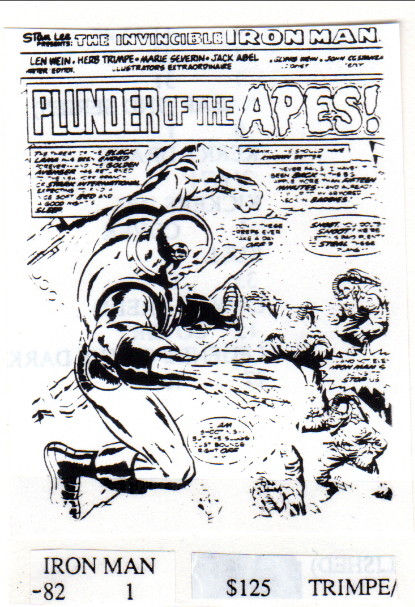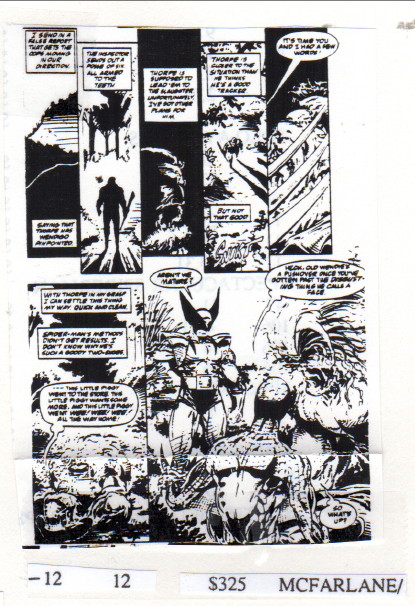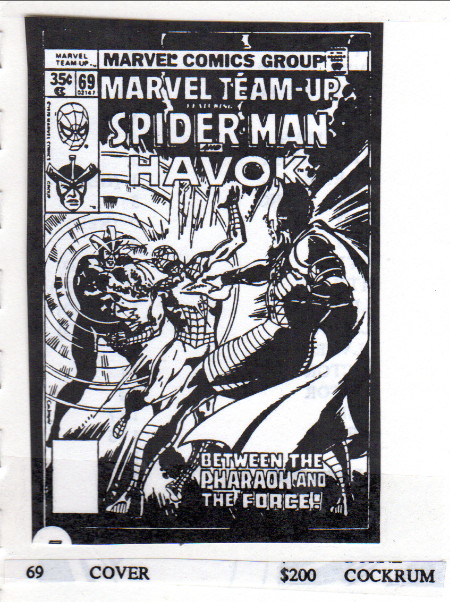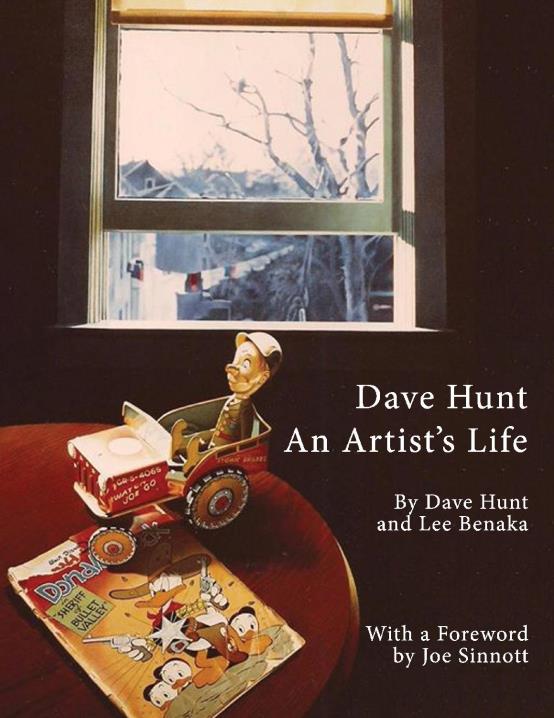Phillip Anderson Interview
My collection of comic art catalogs include two catalogs published in 1992 by Phillip Anderson of Booksource. The Booksource catalogs feature long lists of art for sale by particular artists, and also a wide variety of comic book art for sale at, for the time, pretty reasonable prices. I reached out to Phillip, who now runs an original art website called ArtWorkWorld (www.artworkworld.com), and he agreed to answer a few questions about his career as a full- and part-time comic art dealer.
Where were you born, and where did you grow up?
I was born in Oklahoma and grew up there until moving near Houston Texas when I was 15.
Did you read comics as a child, and if so, what comics did you like?
I definitely read comics as a kid and read a broad range. I think Snuffy Smith #1 might have been my first comic. Marvel Team Up #4 was the comic where it clicked for me that I liked some artists better than others. I used to run errands to the grocery store to pick up stuff for my mom, and I got to buy a comic every time I went. What I bought, and what I read standing around at the store, added up to just about every DC and Marvel comic, and the occasional Charlton.
 When, and under what circumstances, did you see your first piece of original comic book art?
When, and under what circumstances, did you see your first piece of original comic book art?
My dad bought a page from Nova the Unknown for me around 1980 as either a birthday or Christmas present. I still have it.
What were some of the first pieces of art you purchased, and what were the sources for the early art you purchased?
Probably the first sketches I bought myself were at conventions in the Houston area. Maybe the first sketch I ever got was a Gerry Giovinco Slaughterman sketch. This Tim Truman sketch was right around then as well.
How did you acquire the large volume of art for particular titles (i.e., Action Comics, Animal Man, Batman, Iron Man, Solar, Thor) featured in your catalogs? That is, were you buying large quantities of art directly from particular artists like Pat Broderick to sell, or selling art for them?
I primarily was buying direct on the ones that you mentioned. For Action Comics I bought a lot from Brett Breeding and from Kerry Gammil. For Animal Man I was buying from Doug Hazelwood. I bought Batman from a number of people including John Beatty (Legends of the Dark Knight), Pat Broderick (Batman Year 3 in Batman), and Steve Mitchell (Batman and Detective with Norm Breyfogle). I’m sure there were more people on Batman, but that’s what comes to mind. I bought lot of art from Bob Layton, initially Iron Man and Hercules, but later Solar and other Valiant art. Bob was the first person where I plunked down the money for 50+ pages of comics at once. He also introduced me to a number of people at Valiant, whose art I either bought directly or sold on consignment. That included Don Perlin, Bob Hall, and Bernard Chang. For Thor, I bought from both Ron Frenz and Brett Breeding. Mike Grell and Gil Kane were two of my art heroes that I bought from in quantity. For years I would meet Mark Schultz at my table in San Diego on the night of set-up, and I would buy a batch of sketches from him that would pay for his trip to the show. I remember that it took forever to sell an Iron Man splash by Trimpe that was $125!
 At the peak of your comic book and comic art sales, was it a full-time job for you, or a side project?
At the peak of your comic book and comic art sales, was it a full-time job for you, or a side project?
For a year or so I just did business under the Artsource name. Then I started working at a used book store and brought in comics to it and ended up a partner in the company. We changed the name to Booksource, and for 10 years we had as many as 4 stores at a time in the Austin Texas area with comics a major part of the sales. We eventually sold a couple of stores and closed others. I had a separate store in Fredericksburg Texas, and comic art was a big art of that. There were a couple of years there where comic art was my primary income.
Can you share any examples of great art finds you made in the "pre-internet" days of art collecting?
I used to have some cool stuff show up at conventions. I did a show in Galveston that was just terrible, but a guy brought in a Barry Smith page with a barbarian (not Conan) and the Neal Adams page from X-Men where Kyle Lykos turns into Sauron for the first time. There was a Cleveland show where I picked up a page from Giant Size X-Men #1 & a Dick Ayers X-Men splash page (#17 I think). I loved that aspect of the shows because you never knew what would walk through the door. I don’t see that any more.
Are there any great pieces of art that you regret selling, or that "got away" before you were able to buy them?
For the “got away” category the cover that haunts me is Green Lantern #144 by Perez. A dealer had it for $300 I think, and that just seemed too much compared to other Green Lantern covers for that time. I still kick myself over being too dumb to pull the trigger. The “regret selling” category is huge! I had completely forgotten selling the cover to Marvel Team Up #69 by Cockrum with Spidey & Havok for $200 until I saw your copy of my ad. There are a ton of items like that . Most of the stuff I regret selling is more about the financial gain I could have made if I had held onto it like the Marvel Spotlight #5 cover (1stGhost Rider) or the Valiant era covers to Magnus #1 and X-O #1 & 2, or any of the X-Men pages I mentioned above. There are a few that eat at me just because I wish I still had them. I had the page from Green Lantern #59 by Gil Kane that introduced Guy Gardner. I had the house ad For Sandman #8 that was the first published image of Death by Mike Dringenberg and Malcolm Jones III and sold it along with a few other key pieces of art after my first daughter was born. There was a female Green lantern sketch by Adam Hughes that wasn’t anything historic or valuable, but that I really liked. I could probably go on for days if I think about it!
 How does your current ArtworkWorld business compare to your Booksource business of the 1990s?
How does your current ArtworkWorld business compare to your Booksource business of the 1990s?
These days art sales are just a hobby. I sell a little art, and it pays for me to buy other art. Every now and again I sell something that kind of hurts to fund something big, but it’s mostly just to keep a hand in the hobby.

